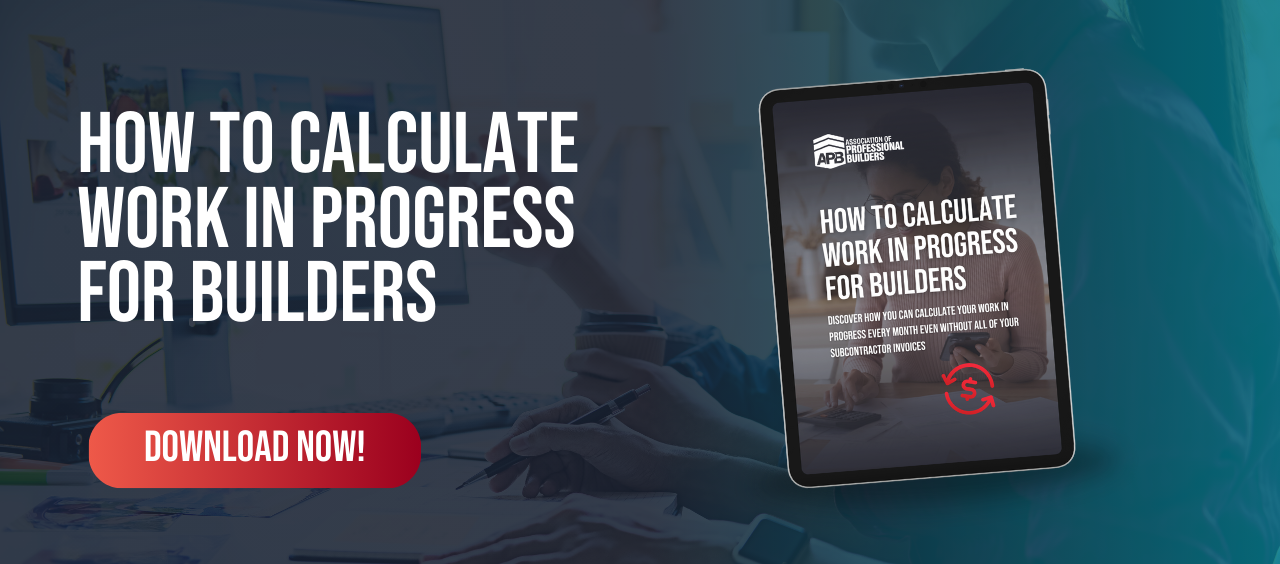It's the most misunderstood number in the construction industry and it's responsible for hundreds of builders losing money year after year.
The fact is if you are building new homes and you employ subcontractors, then your Work In Progress figure is most likely a LIABILITY. In the rare instances where it is an asset, you may have even bigger problems in your business.
Typically builders rely on their accountants to calculate their Work In Progress figure at the year end. But in our experience over 95% of accountants do not know how to calculate this number correctly for a building company. Even the associations and licensing authorities have no idea about the size of the problem or the implications for builders when this number is incorrectly calculated.
Why Is WIP Misunderstood?
The work in progress calculation has its roots in manufacturing. Accountants needed a way to value the finished goods that were not quite...well finished.
The goods sitting in the production line were no longer raw materials as labour had been added to the process. But because the production process was not yet finished they could not be valued as finished goods. Accountants needed a way to value these goods that were no longer raw materials, they were not quite finished goods so they came up with 'Work In Progress'.
The Work in Progress figure accounted for the labour that had been invested into the raw materials sitting in the production chain and accurately reflected the true value of stock sitting in a factory including raw materials, finished goods and everything in between.
Logically, this figure was applied to the construction industry to value the work being completed before payment was made. A painter, for instance, would pay his employees weekly during a job but only get paid on completion.
If the job ran for 4 weeks then the accounts would show a loss before the 4th week because money had been spent on labour, but no receipts had been recorded to offset the deficit.
A simple transaction valuing the 'Work In Progress' (say 50% of the contract at the end of week two) kept the accounts for the painting company accurate as there was in effect an 'invisible debtor'.
In other words, a debtor with no sales invoice. Entering an amount equal to 50% of the claim which reflected the fact the job was halfway to completion solved this problem.
So What's The Problem For Builders?
The problem with building companies is that they tend to 'front load' their jobs for cash flow. That is to say, their claims are disproportionately weighted towards the beginning of a job rather than the end in order to generate additional cash flow.
Nothing wrong with that, it's good business practice to get your cash in ASAP....so long as you know exactly how much you are claiming early.
The other problem is that builders use subcontractors for everything. Naturally there is a delay between work being completed and a subcontractor's invoice becoming due.
In more extreme cases, some subcontractors are slow to invoice compounding the problem even more.
The Result
The end result for builders is surplus cash! And that is a real problem for both professional builders and the cowboys out there. For the cowboys, they don't understand where this cash has come from. They mistake it for profit and spend it on a new Ute/Boat/Jet Ski. Take your pick, we see it time and time again in liquidators reports.
For the professional builder, this is a real issue. When the cowboy builder sees money in the bank he (or she!) are unaware they are failing to make a profit from their jobs and continue to cut prices in order to win more contracts and cash flow their business.
Think of it like this, Work In Progress is like a pile of dirt that gets bigger and bigger as the turnover grows in a building company.
Turnover is like a mat that covers the dirt (Work In Progress).
When the turnover grows the pile of dirt grows...but you never get to see it because the mat is so big.
But when the new work stops and turnover declines...
The mat shrinks to expose...a big pile of dirt...otherwise known as 'Other Peoples Money'
And that is why building companies go bust for millions of dollars...because in most cases they never made a cent in profit for years, but the problem was hidden from view by the turnover.
Are you calculating your Work In Progress Figure?
More to the point, do you know how much money you are making on every single job every single month?
If you don't, then you are flying blind and potentially flying into the side of a mountain.




